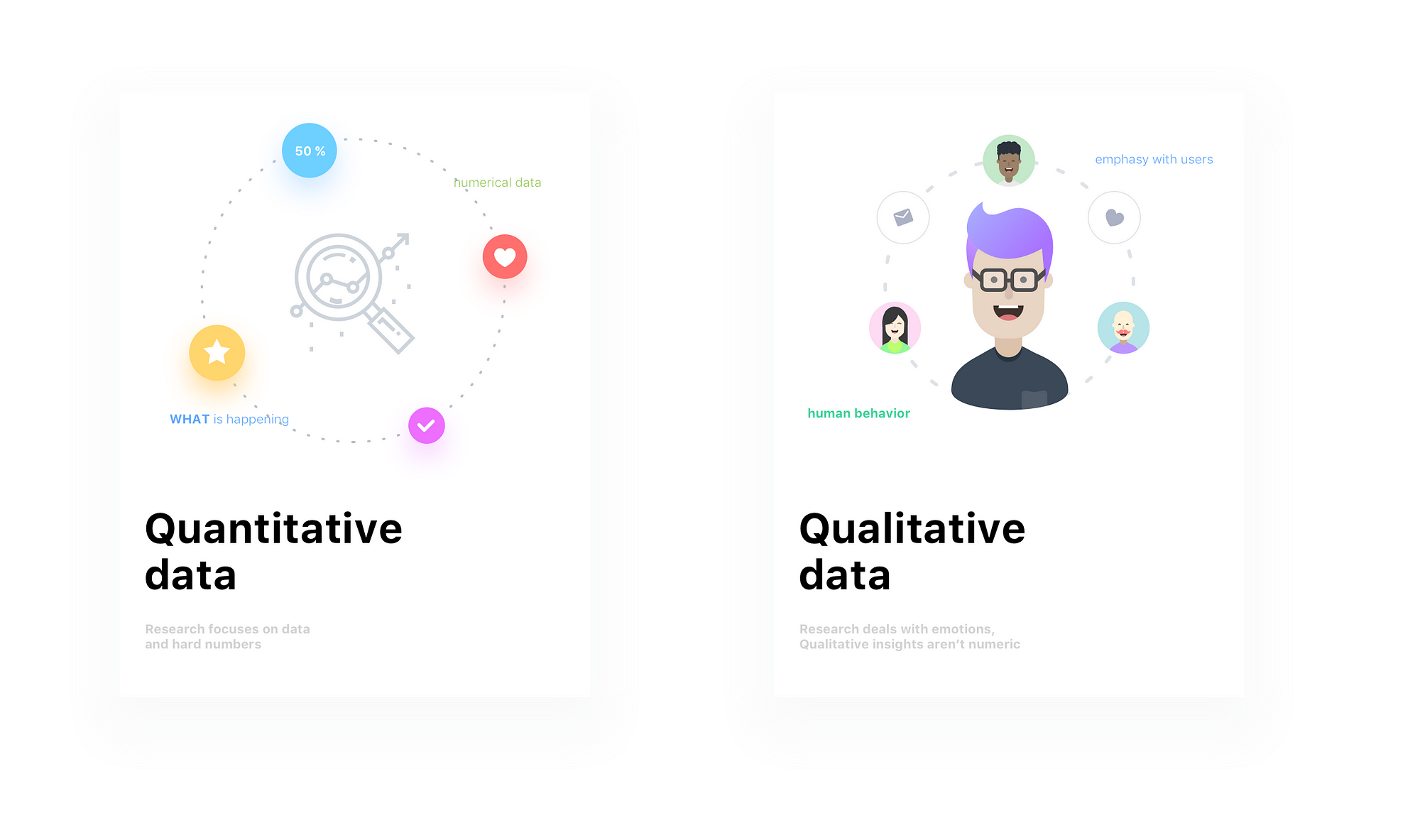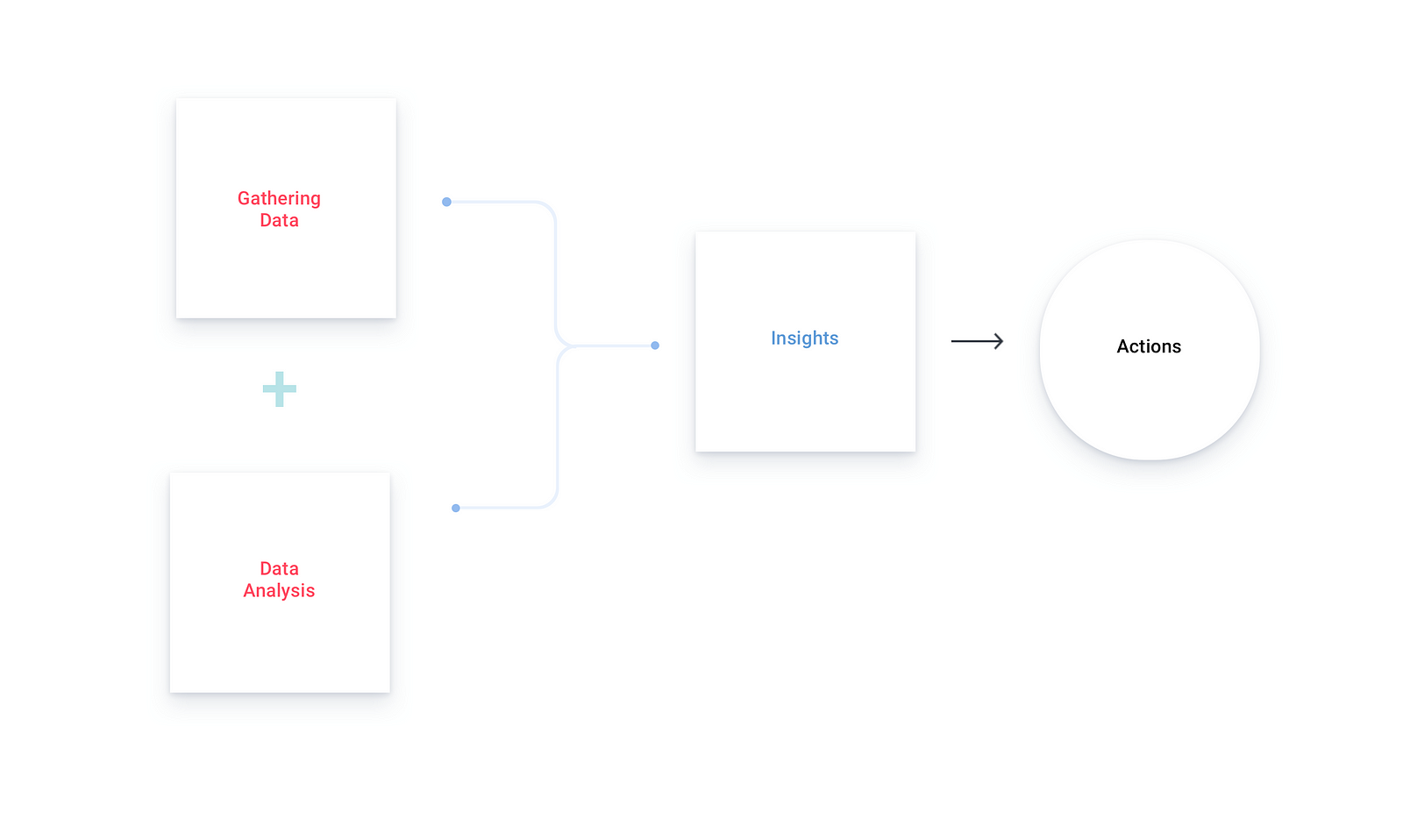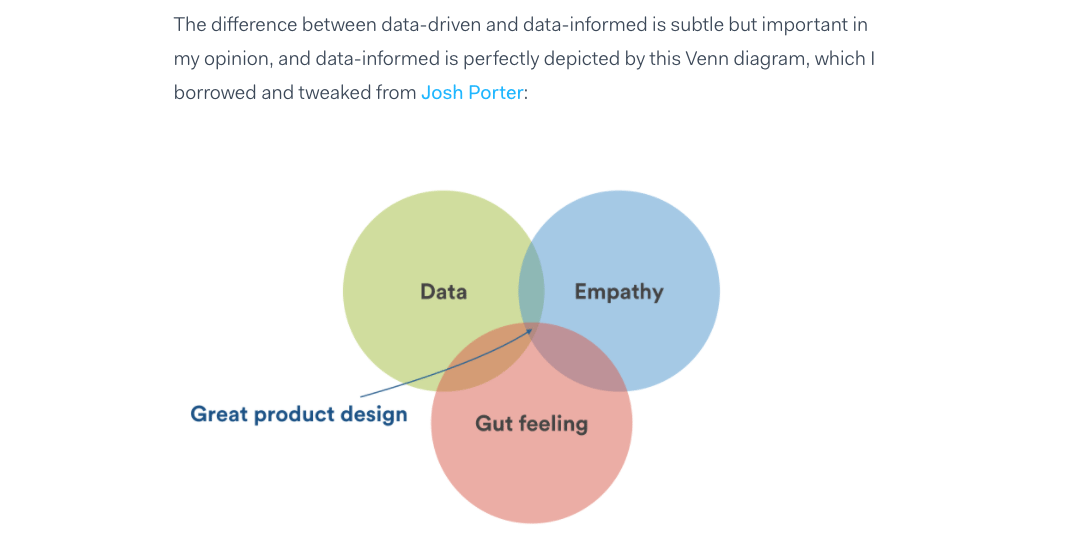To build a successful product design we have two key players, Data & Design, those needs to be the true love, they need be together all the times data will inform your decisions and help you to understand the user.
Today’s designers is no longer a specialist inserted at the end of the product development cycle. Every business needs to value design, emphasize and recognize its importance to succeed, It’s a culmination of everything.
As product designers, we need to understand the immense value of talking to users and customers in the start of the product development process. This helps us make sure we create the right product for the right people. Just a few years ago product decisions were often based on a designer’s wants and intuition. Now in a world where analytics rules, design is more becoming data-driven, but we need to find the right balance between sides; Gut feel, Data-drive, Data-inform.
More and more companies/startups are adpoting A/B test to validating design decisions and move forward with the products and features, but we need to understand the why? why the user choose B instead of C?? we need to be more data-informed rather then data driven.
Data is very important but a little instinct goes too
There is no questioning the importance of data in design. Data helps us understand our customers’ behavior, something that’s fundamental to good design. Here is a great article by UX mag 6 myths of data driven design is an awesome reading that explains how to move from data-driven to data informed.

Quantitative data:
Research focuses on data and hard numbers.
Data that tells you WHAT is happening. Usually, it’s a numerical data, plaforms like Google Analytics, Amplitude, Siense… can be a great tool to check the number What.
Qualitative data:
Research deals with emotions, human behavior, emphasy with users.
Data that tells you WHY this is happening. Qualitative insights aren’t numeric.
For example you can use one of those tools to check if the users are click on certain button “What is happen”, What this data doesn’t tell you is why. Whydoes a certain group of users take one action.
Good product design is the right balance between data, empathy and your gut feel.

Data-driven and data-informed
Data is an extremely valuable tool and it’s critical to our design process. Designing without data is like walking in the dark, but be just data-driven design is dangerous and can lead to uninspired design, we need to know how to balance both sides. Use data extensively to inform your strategic decision-making just don’t let it completely drive your decisions.
Quantitative Data on its own is pretty much useless, I would say results from A/B test can only give you directional information, we need more insights from Qualitative to create meaningful product experiences. Have in mind data can be anything from conversion, engagement, time spent in a product, NPS etc…
- implement and measure the impact of your change. This often means the data-informed design iteration — tracking changes across time and optimizing the product using data.
- don’t’ just analyze, synthesize (use data to explore new patterns and dig deeper on problems, rather than just to prove who’s right or wrong).
- If you test 2 buttons colors try to find why they choose one over the other, and here it comes as well psychology in ux.

Humans behind the numbers
Remember there are humans behind the numbers! In everything you do try to keep the focus on solving users problems, ask them why they choose that path instead of the other. Don’t get too obsessed with the metrics. Have real conversations face-to-face and let customers drive the conversation.
Find a balance between Data-driven and your user.
Start by analyzing your existing customers. Look at your site’s app behavior flow, dive into your audience analytics and demographic data to get a sense of their personas. Personas should let us better understand our real users, spread that knowledge throughout the entire company, and help everybody on the team make smarter, more human-centered product decisions.
Gut feeling / intuition
From Julie Zhuo, the Facebook product design director:
Data and A/B test are valuable allies, and they help us understand and grow and optimize, but they’re not a replacement for clear-headed, strong decision-making. Don’t become dependent on their allure. Sometimes, a little instinct goes a long way.
Is very true, you can have all amount of data from analytics and users interviews but will not remove the fact that you need essentially make the decisions on how to interpret that data and bring it to reality.
Gut feeling is a build up over time is comes with experience, by making decisions and mistakes but learning along the way. As product designers is our job to make this happen bring the best experience to our users.

Finding Balance is Key to Good Design
The danger in any product design environment is when designers rely on one part of a strategy too heavily and end up optimizing for the wrong thing. Good product design comes from finding the right balance between data, empathy, and vision.
You need patience understanding the feedback you get from data and research (from users), and your gut feel of what is right or wrong, you need to be more data-informed.

Data is about people and their behaviors
Once we understand we can improve. We can enrich. We can even predict. We can design and build new, amazing experiences that enhance the day to day lives of people.
About the Author
This article was written by Marco Lopes, Senior Product Designer @letgo, @casumodesign and former Lead Product Designer @Farfetch.





























